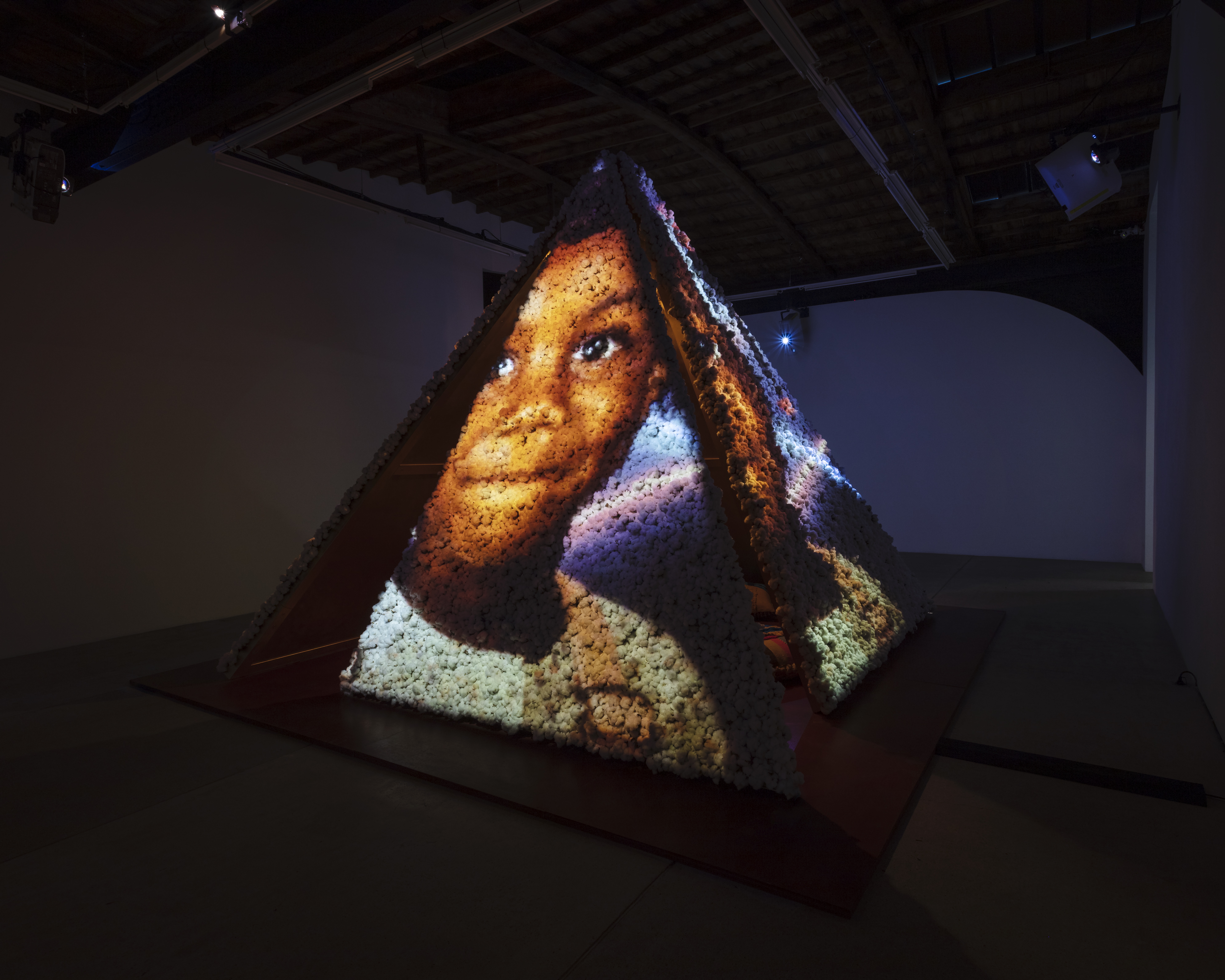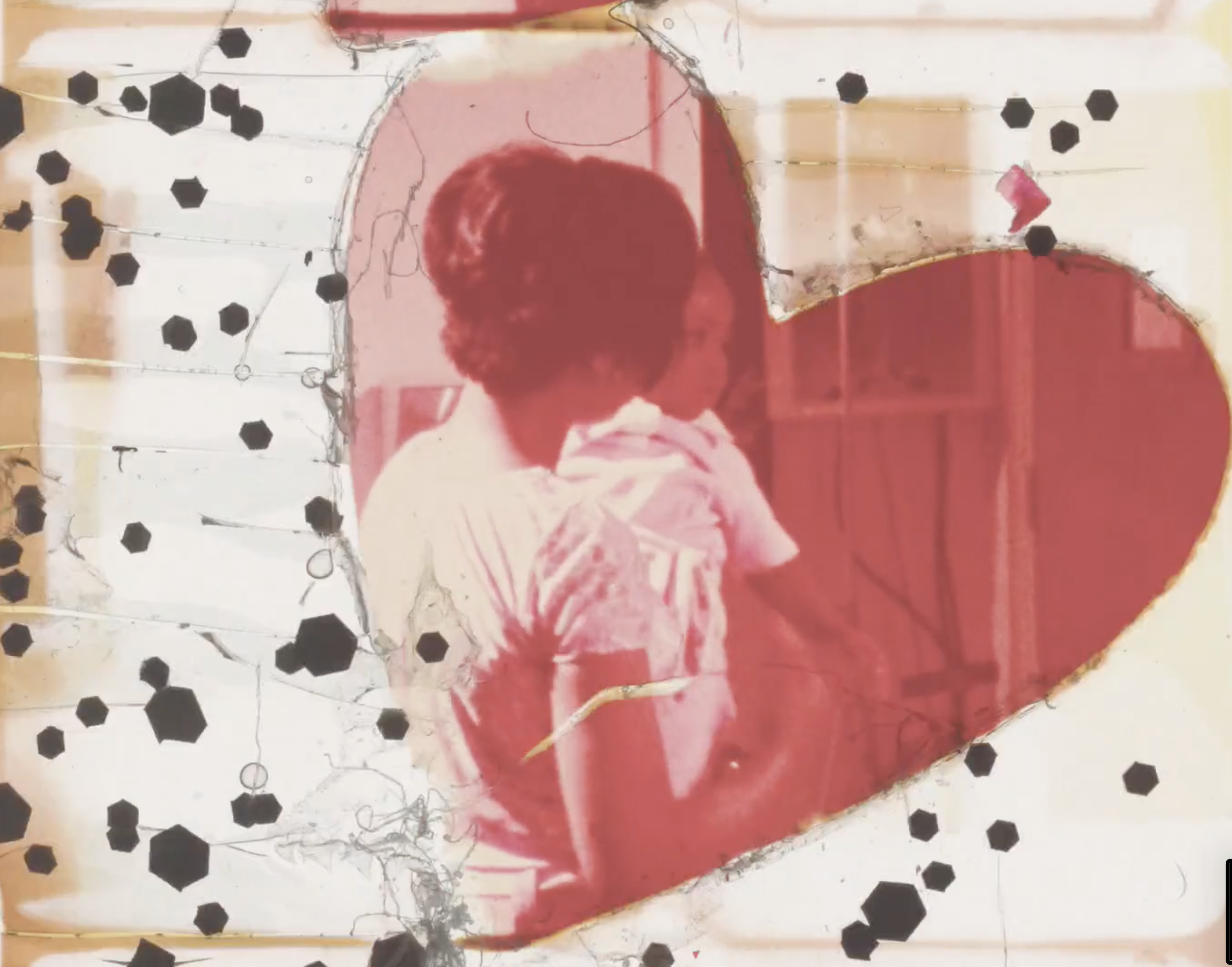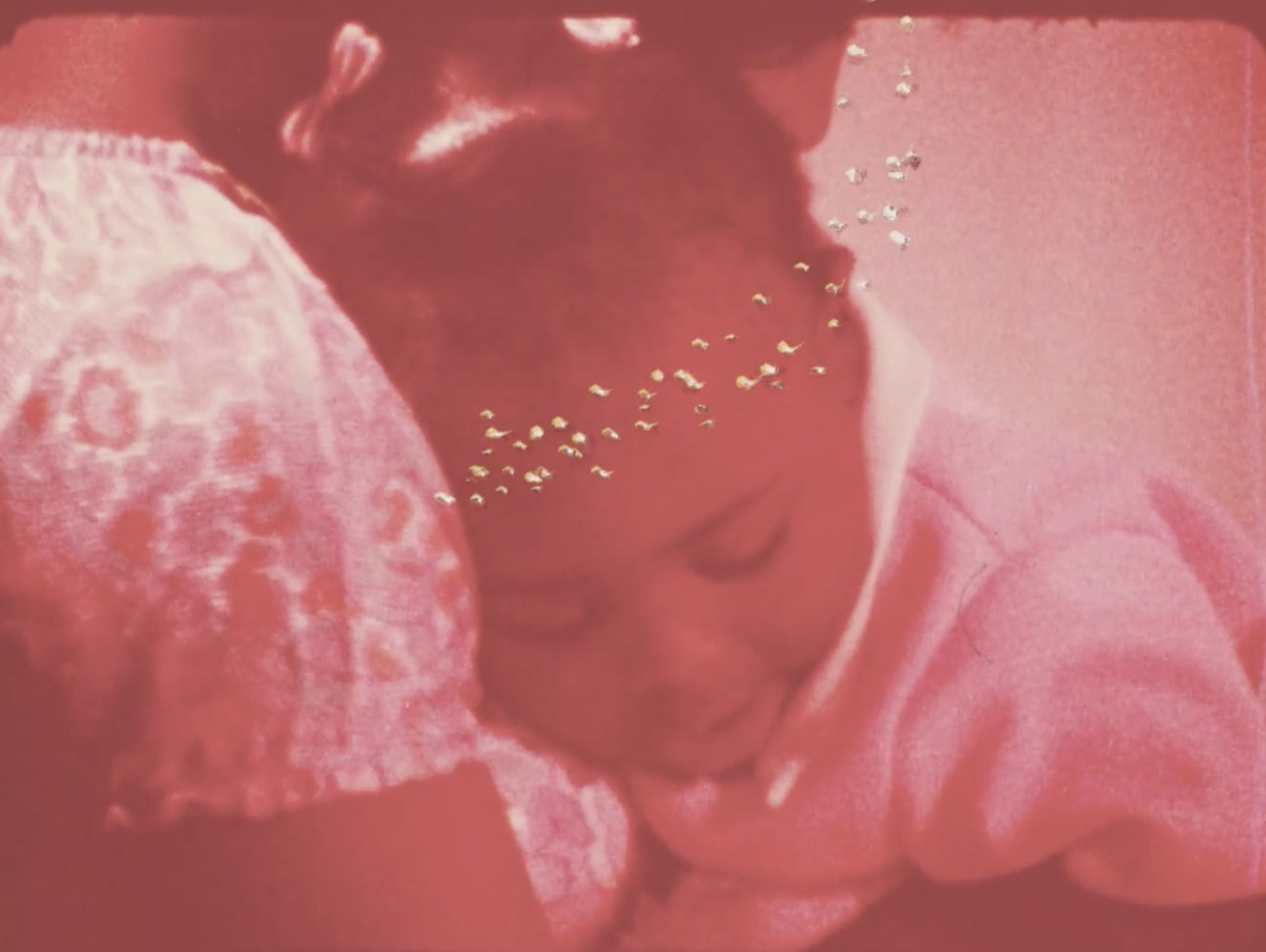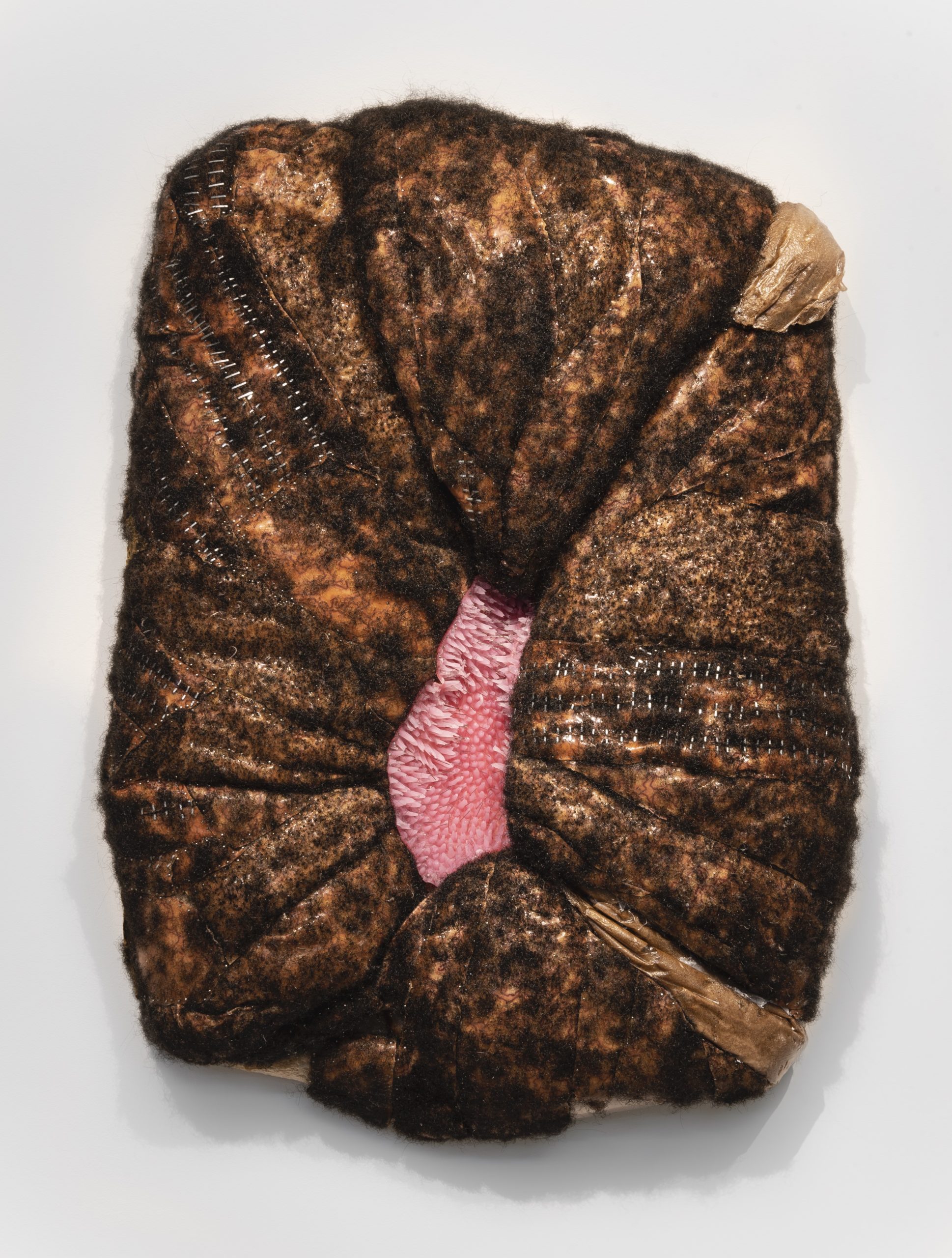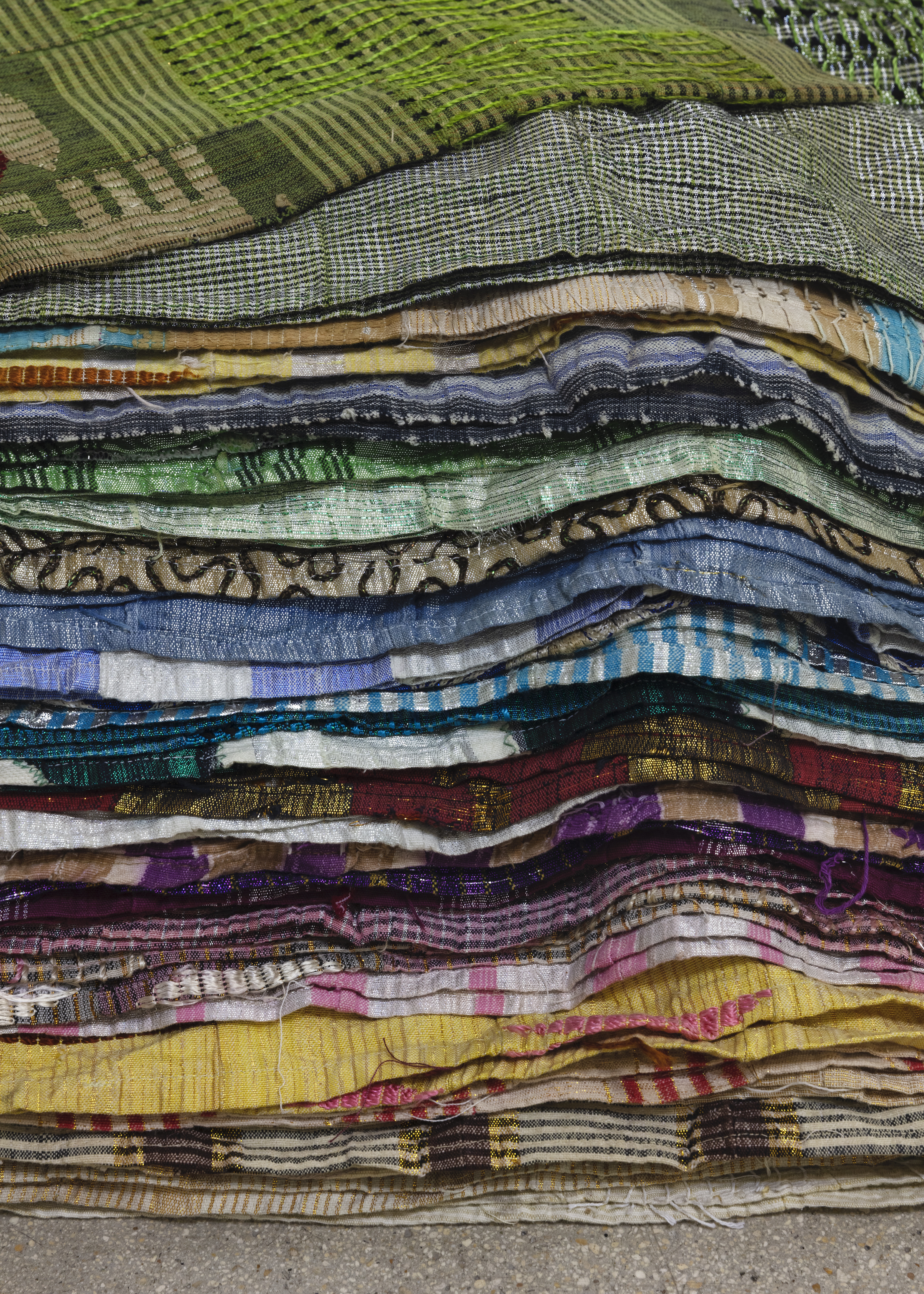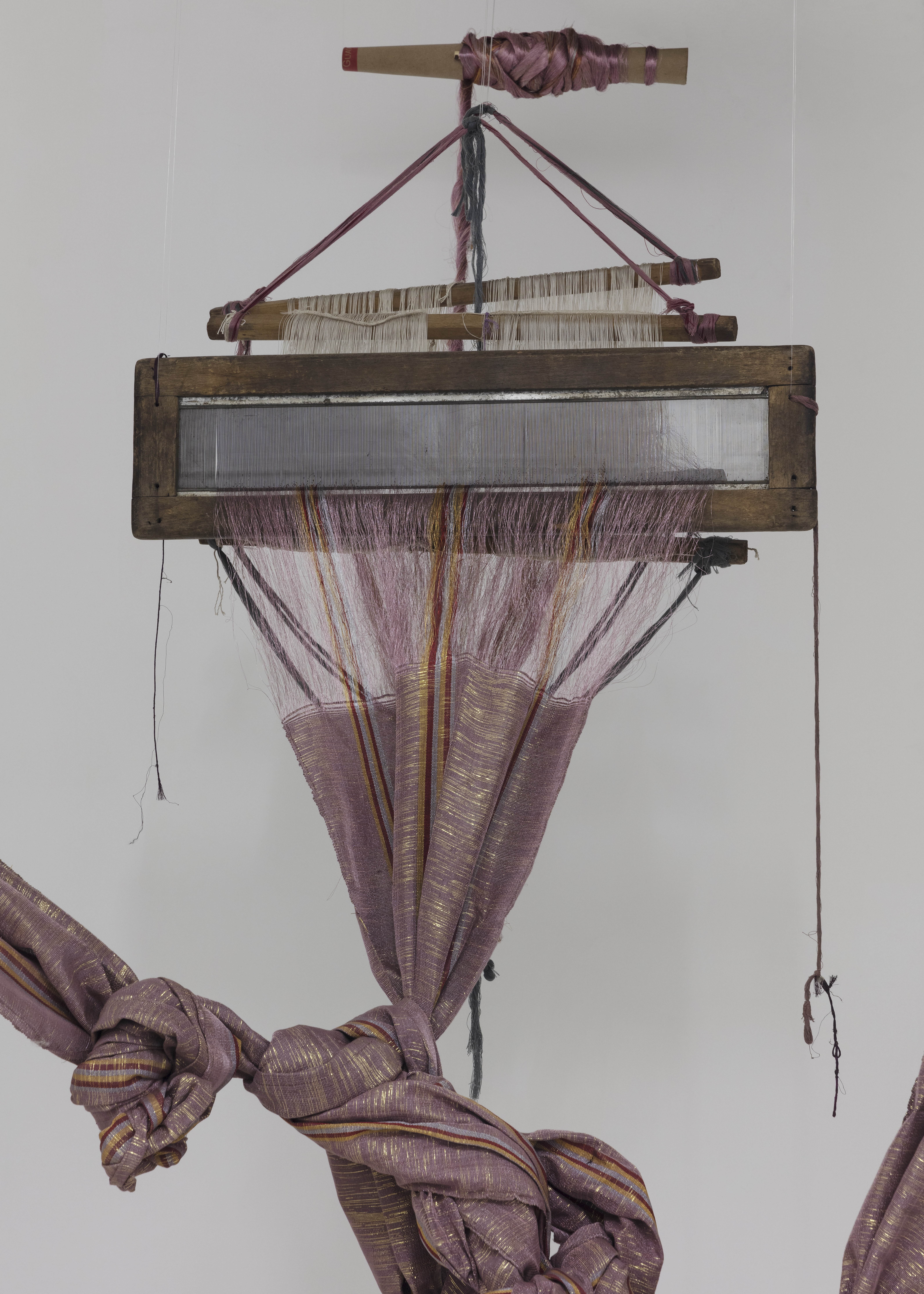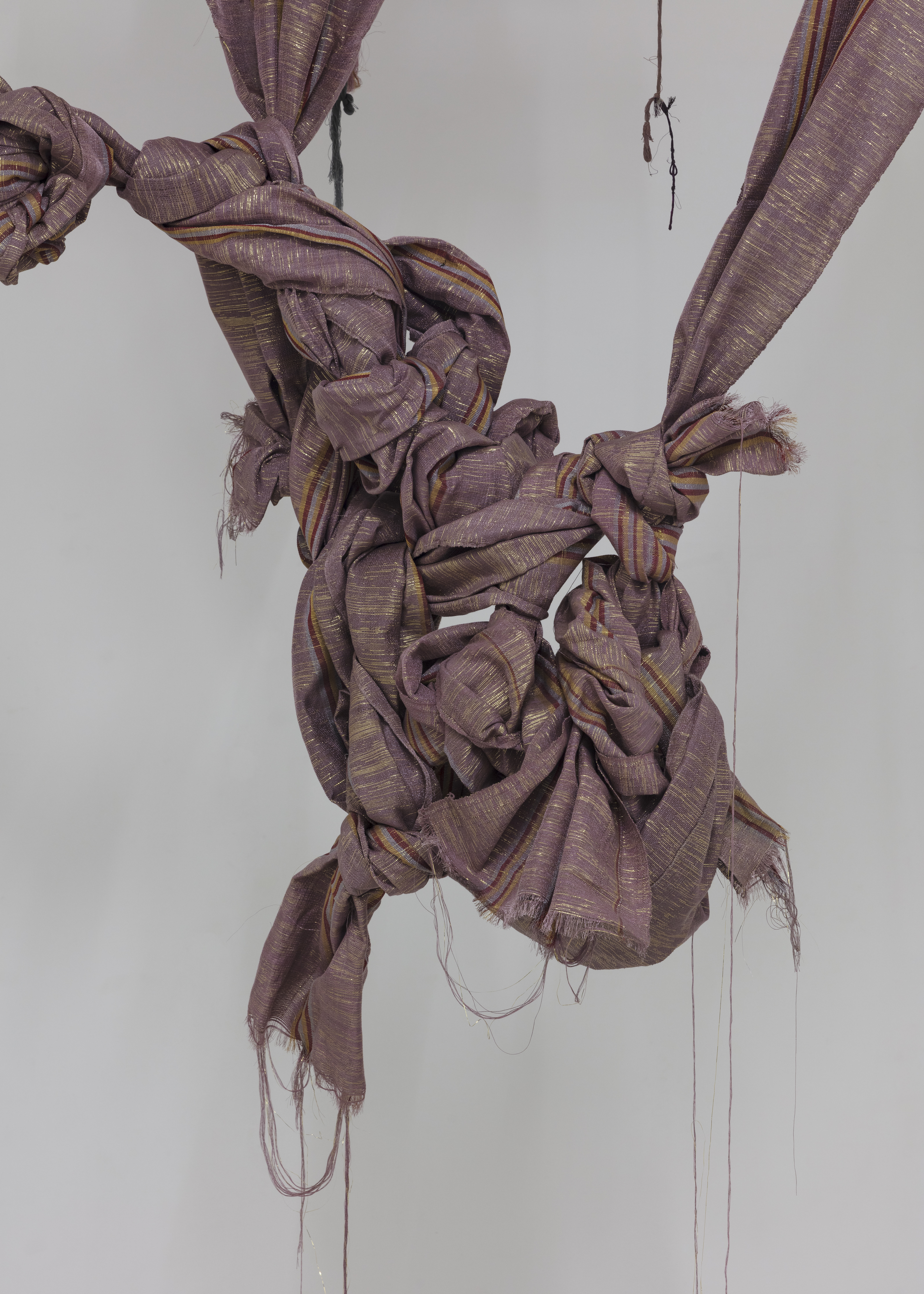partus/chorus
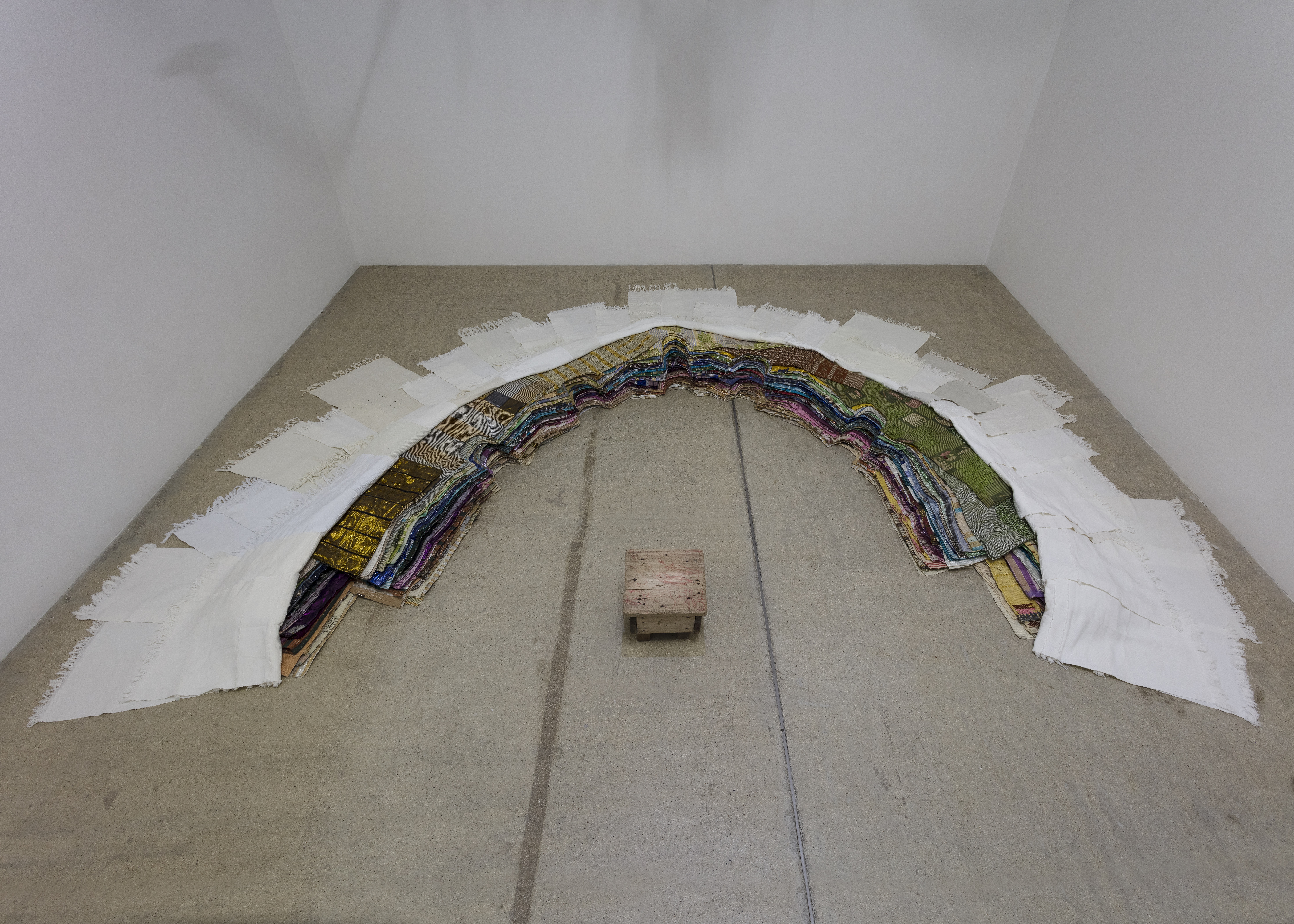
Eniola Dawodu, A Confluence of Lineages, 2022, mixed media: mid to late 20th century Yoruba buba garments and hand-woven Oja cloth, wooden stool, dimensions variable, unique [photo: Claire Dorn; courtesy the artist and galerie frank elbaz]
Share:
partus/chorus is US-based artist Ja’Tovia Gary’s curatorial debut. It is an exhibition about the Black womb from a perspective anchored in the vast and complex wake of the Atlantic slave trade. A video-montage representation of Black motherhood flickers across the tripod structure of Gary’s sculptural installation as you yield her your body and soul (2022) and seeps from Doreen Garner’s fleshy wall-mounted work After Her Womb (2020), while Eniola Dawodu’s textile and thread installation Threshold. Thoroughness of Threads (2022) expands this representation to encompass the womb’s capacity for generational transmission. The exhibition is haunted by tension between the womb as a memorial to survival and joy versus the womb as a wound, as the site of dispossession from the body. Borrowing Hortense J. Spillers’ formulation, Gary’s curatorial touchstone for partus/chorus is the Black woman/mother as “a locus of confounded identities, a meeting ground of investments and privations in the national treasury of rhetorical wealth.”
Gary’s installation is kaleidoscopic. A video maps onto a four-sided pyramid-shaped structure, which the artist has surfaced with soft, dense balls of unprocessed cotton. The images are extracted from Montage Mitochondrial, an autobiographical film loosely organized around footage from Gary’s family archive, including portraits of the artist as a child, alongside found footage of Black women and children over the course of the 20th century. Gary’s mapping technique breaks any linear notion of time, producing instead a swirling image monument, a vessel for the joy and ambivalence held between the Black mother and her child.
Ja’Tovia Gary, as you yield her your body and soul, 2022, mixed media, cotton bolls, dried flowers, hand woven yoruba oja cloth cushions, sound, HD & SD video projection mapping 145.62 x 192.86 x 192.86 inches, version 1 out of 3 + 1 AP [photo: Claire Dorn; courtesy the artist and galerie frank elbaz]
A photography studio–style portrait of a girl child floats along a diagonal axis across one surface of the installation. Her resemblance to the artist is striking. Before I could fully register it, the image was swallowed by footage of a mother and her baby flickering inside a heart-shaped, annotated film frame. The images slide across the textured surface of the structure and beckon viewers into the interior, but also warn them of these women’s complexity. The play of faces, gestures, intimate gazes, and soundless jests is fast-paced and fragmented. Mildly disoriented, I slip inside—as directed by the press release—to “sit and contemplate arrangements of dried flowers,” which are carefully laid out on the floor atop a circular bed of cotton balls.
Ja’Tovia Gary, Montage Mitochondrial, 2022, film still [courtesy the artist and galerie frank elbaz]
Ja’Tovia Gary, Montage Mitochondrial, 2022, film still [courtesy the artist and galerie frank elbaz]
Garner’s bas-relief sculpture, After Her Womb, is installed beside Gary’s installation and disrupts that work’s ambition to provide “a space of warmth, calm and meditation” for the viewer. In Garner’s work, the womb is the site of visceral dispossession. Made of Urethane foam, silicone-soaked satin, hair weave, steel pins, and staples, the work consists of bulging, folded forms that resemble skin. Hair is embedded in this pseudo-skin, making the visual connection to labia unavoidable, even in ignorance of the work’s title or its bright pink tactile center. Garner’s work is, to borrow again from Spillers’ Mama’s Baby, Papa’s Maybe: An American Grammar Book, one “marked [by] a theft of the body—a wilful and violent (and unimaginable from this distance) severing of the captive body from its motive will, its active desire.”
After Her Womb is part of a body of work by Garner that addresses the treatment of enslaved women by the White medical establishment in the United States. Her referents are Anarcha, Betsey, Lucy, and other women whose names and lives were not recorded but who were nevertheless used as test subjects by J. Marion Sims in his experimental gynecological surgeries. Although these women lived during the 19th century, Garner’s representation of their treatment—painful-looking stitches and line upon line of staples in the latex pseudo-skin—speaks as much to the present medical establishment’s disregard for the integrity of Black women’s bodies.
Doreen Lynette Garner, After Her Womb, 2020, Urethane foam, silicone soaked satin, hair weave, steel pins, staples 28.75 x 20.86 x 5.86 inches, unique [photo: Claire Dorn; courtesy the artist and galerie frank elbaz]
Gary’s curatorial framework manages to represent mothers, children, lineage, and, in Garner’s case, the womb, all in a fairly direct sense, all without limiting the exhibition’s significance to a conservative notion of gender. This effect derives from the way Gary links the representation of Black femininity with the figure of the womb and, thus, grounds both in their historical construction. The exhibition’s title refers to the partus sequitur ventrem, a legal doctrine that translates to “as goes the womb,” which was operative during chattel slavery. The status of a child was determined by the status of the mother, meaning that a child was born into slavery through their mother’s womb. “The Black womb,” as written in the press materials, is “a site of transformation, of both creation and destruction, and a portal by which historically subjects have become objects.”
Gary’s proposition that the womb exists here as a kind of liminal space beyond gender echoes, again, Spillers’ argument: When the slave trade enacted a violent cut between people and their active desires, the Black subject lost “at least gender difference in the outcome, and the female body and the male body become a territory of cultural and political manoeuvre, not at all gender-related, gender-specific.” The womb is disconnected from the idea of femininity in the wake of this violent paradigm, a disconnection that was intended to dehumanize Black women, yet also loosened the hold that gender has on them.
Eniola Dawodu, A Confluence of Lineages, installation detail, 2022, mixed media: mid to late 20th century Yoruba buba garments and hand-woven Oja cloth, wooden stool, dimensions variable, unique [photo: Claire Dorn; courtesy the artist and galerie frank elbaz]
British-born Nigerian artist Eniola Dawodu’s intricate, layered installation A Confluence of Lineages (2022) stands in relation to the show’s premise, but also at a distance. Her work represents a lineage not presented as broken—not in the same definitive sense as the other included works. Dawodu laid out hundreds of Yoruba buba garments and hand-woven Oja cloth, roughly in the outline of a pregnant belly, on the floor of the gallery’s back room. The shirts are placed in layered piles, covered in white cloth, clean and bright and carefully arranged. Skill, patience, and long preparation are evident in Dawodu’s representation of the womb. The work’s affect is joyful but serious, buoyant, and knowing.
Eniola Dawodu, Threshold. Thoroughness of Threads, installation detail, 2022, mixed media: Yoruba Aso Oke loom structures, cotton and synthetic threads, hand-woven Aso Oke cloth, dimensions variable, unique [photo: Claire Dorn; courtesy the artist and galerie frank elbaz]
Eniola Dawodu, Threshold. Thoroughness of Threads, installation detail, 2022, mixed media: Yoruba Aso Oke loom structures, cotton and synthetic threads, hand-woven Aso Oke cloth, dimensions variable, unique [photo: Claire Dorn; courtesy the artist and galerie frank elbaz]
Yes, there is something ominous about the sculpture hanging from the ceiling, Threshold. Thoroughness of Threads (2022). The knotted fabric could be a body suspended between stocks or tree limbs, or it could be a child suspended in the air between organs, in the floating space of the womb. This threshold does not romanticize the womb, but Dawodu’s formal choices signal that both the womb laid out on the gallery floor and the one suspended above it are entangled with, or woven from, a long history. The work functions as a foil to Garner’s Afro-pessimist objects and Gary’s ambivalent memorial. Dawodu is “grounded by energies of origin,” in her own words: “Hand in hand, breast to breast, residual gestures of care and continuity coalesce. Arms wide open, an invitation to receive and remember.” I appreciate the lack of consensus that Dawodu’s work introduces into partus/chorus, as it grants the whole exhibition an important horizon without promising a simplistic resolution to the history Gary draws upon.
Natasha Marie Llorens is a Franco-American writer and curator based in Stockholm, where she is professor of art and theory at the Royal Institute of Art.
